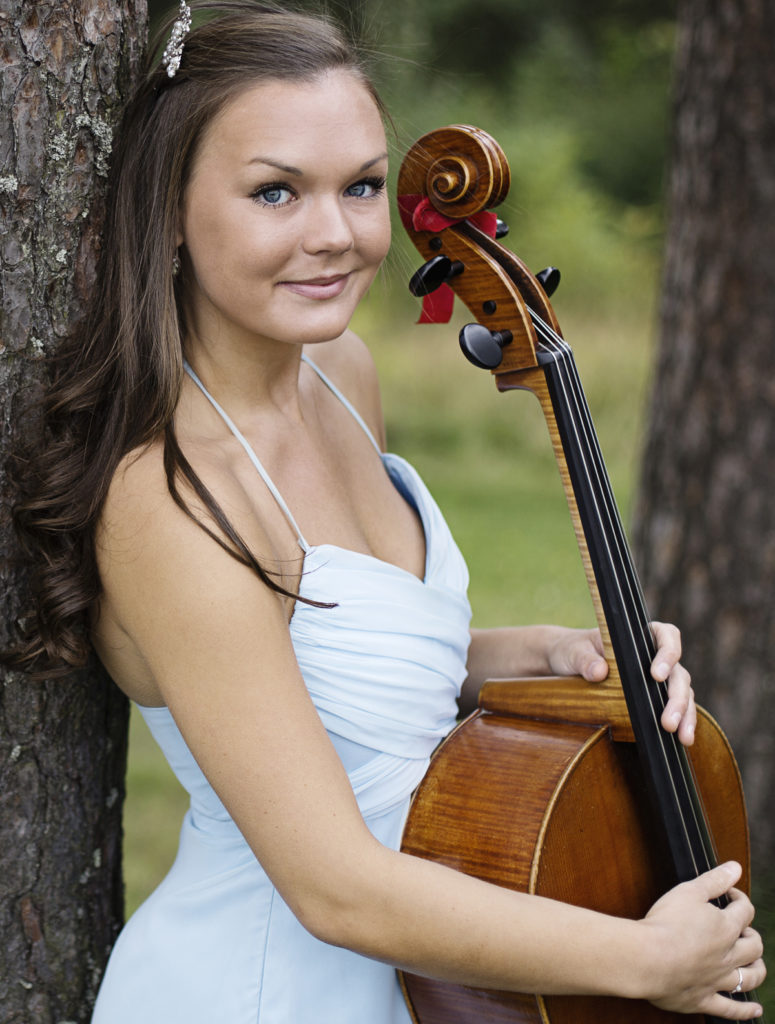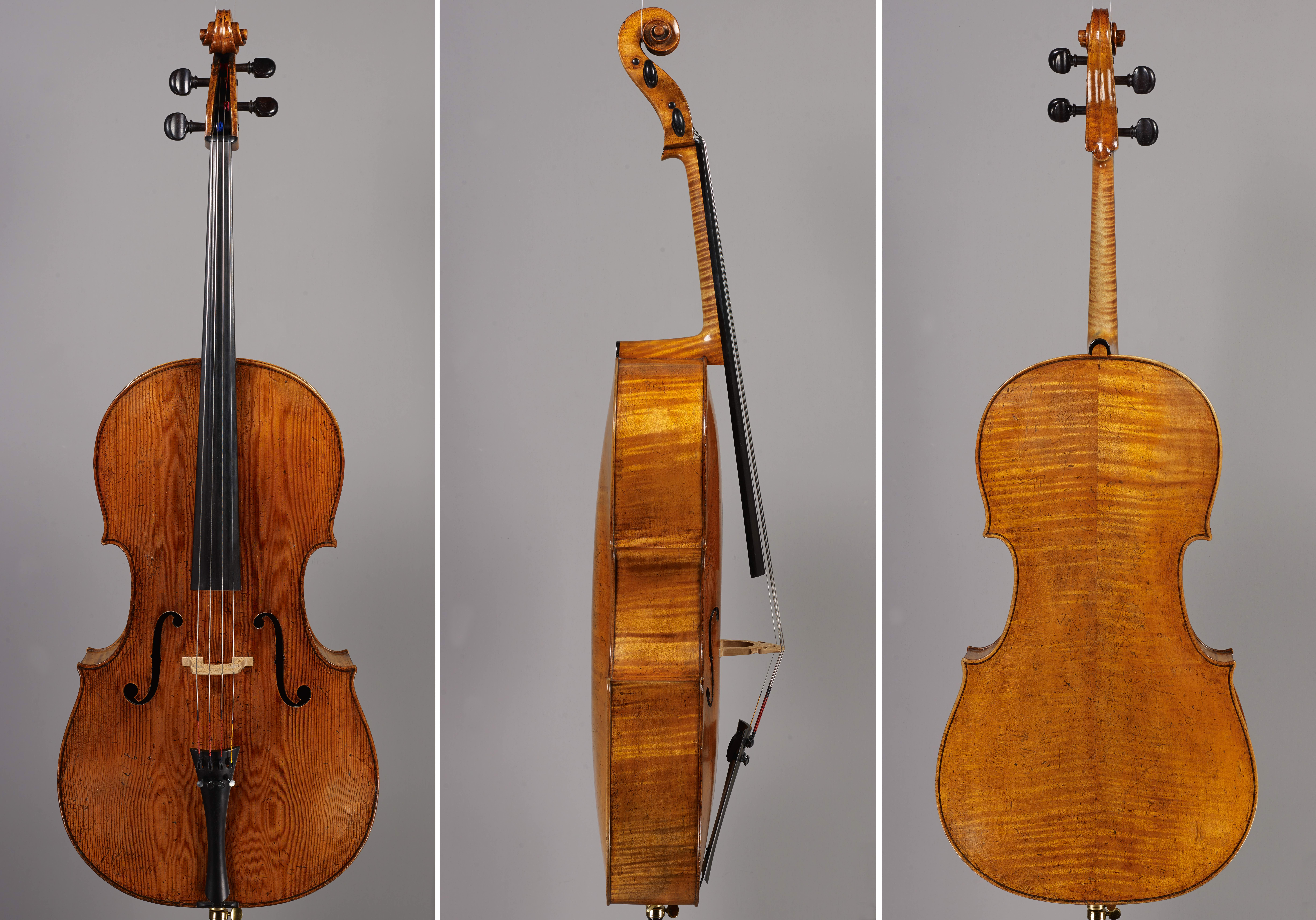Joannes Florenus Guidantus
Cello made by Joannes Florenus Guidantus in Bologna in 1730. Sandra Lied Haga plays on this instrumentet.
Giovanni Floriano Guidanti is presumed to have been the son of the Bolognese violin maker Floriano Guidanti, who worked in the parish of San Sigismondo, in the university quarter of the city at the time of Giovanni’s birth in 1687.
The elder Guidanti had been established there since about 1665, when he was appointed luthier to the Accademica Filarmonica, an important position in the city which is recognised as not only the home of the oldest university in Europe, but whose school of violinists was hugely influential, through Ercole Gaibara (1620-1690) and his pupil, Giovanni Benvenuti. The great violinist and composer Arcangelo Corelli was a contemporary of Guidantus, and is said to have been admitted to the Accademia at a very young age in 1670, and studied the violin with Benvenuti.
The position of luthier to the Accademia indicates Guidantus’ status in Bologna, of which there is surprisingly little evidence in the form of instruments made by him. His work may have been to some degree administrative, and involving repair work and trading in all instruments, not merely strings, and he may also have been a musician, generally a requirement of any member of the Accademia. Several other makers were active in the city at the time, most notably Giovanni Tononi and Don Nicolo Marchioni (known as Amati), who have both left substantial bodies of work in distinctive and characteristic styles.
Giovanni Guidanti succeeded to the appointment to the Accademia in 1716, after the death of Floriano in 1715, and seems to have been far more active as a maker. His work reflects the influence of the earlier Bolognese makers, showing the disciplined craftsmanship seen in Tononi’s work, and a tendency towards the high-arched Stainer or Amati model. The designs are well-balanced and cleanly executed, and invariably have a varnish of soft, pale golden-brown colour. His materials are very often of the very highest quality, using spectacularly flamed maple in the backs and flawless spruce for the fronts, and the cello in the possession of the Dextra foundation is a perfect example of this aspirational quality of work, and it was clearly highly valued at the time. In 1783, the cellist and composer Giambattisa Cirri (1724-1808), wrote to his teacher, musicologist Padre Giovanni Battista Martini at the Accademia to enquire whether the cello by Guidanti owned by the padre’s brother was for sale. Sandro Pasquale, in his research published as ‘Lutherie in Bologna’, pubished in 1998, cites further correspondence between Padre Martini, and a nobleman of Modena, Fulvio Rangoni. In 1739 Rangoni sent Martini a violin for evaluation and improvement by ‘Fiorini’, as Guidanti appears to have been known, which he carried out to Rangoni’s satisfaction. This resulted in several very remunerative commissions for Guidanti. Another endorsement of his abilities comes in the ‘Manoscritto Liutario’ written by another Bolognese violin maker, Giovanni Antonio Marchi in 1786 (published by Roberto Regazzi in 1986) a philosophical and practical treatise on the making of violins, in which he holds up the maker he knew as ‘Fiorini’ as the highest example.
The violin maker we commonly know today as Giovanni Floriano Guidanti, who signed himself on his labels in latin as Joannes Florianus Guidantus, and who seems to have been known to his contemporaries as Fiorini, died in 1760. His wife Rosa and daughter Maria seem to have inherited considerable wealth. Records do not show who took on the position of luthier to the Accademia after Guidanti, but the leading makers of Bologna in the succeeding generation were Marchi and Giovanni Varotti, whose work is by no means so well known. It was another maker by the name of Fiorini, although not as far as we know related, Raffaele Fiorini (1828-1898), who established a new and very successful Bolognese school of violin making in the late nineteenth century

Sandra Lied Haga
Despite her young age, Sandra Lied Haga has, for many years made her mark in Europe and Norway. Moreover, she has achieved four international first prizes, honorary prize, six national first prices and a number of other awards.
